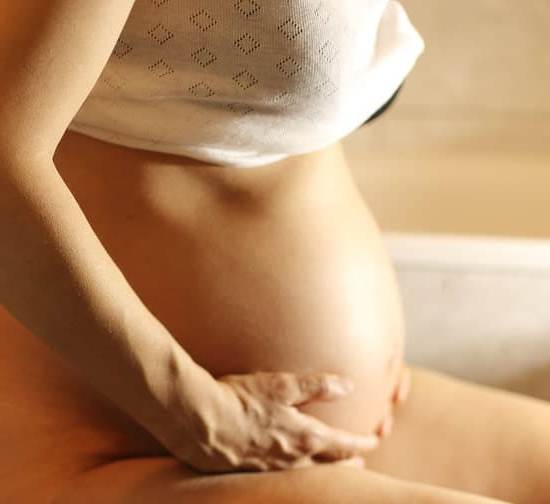Are you wondering when’s the best time to take a pregnancy test? Making sure you choose the right time to take a pregnancy test is crucial in order to obtain accurate results. Understanding the importance of timing when it comes to pregnancy testing can help alleviate unnecessary stress and confusion. In this article, we will delve into the significance of choosing the right time to take a pregnancy test and explore the science behind it.
When it comes to determining the best time for taking a pregnancy test, there are various factors that come into play. From how pregnancy tests work to understanding the impact of different factors such as menstrual cycle and fertility treatments, it’s essential to consider all elements before deciding on the perfect time for testing.
By gaining a deeper insight into these aspects, individuals can make informed decisions about when is the most ideal time for them to take a pregnancy test.
Furthermore, early pregnancy testing has become increasingly common, leading to questions about its accuracy and reliability. We will discuss whether taking a pregnancy test before a missed period is a viable option and examine both its advantages and disadvantages. By exploring these topics in-depth, readers will gain valuable knowledge on when’s truly the best time to take a pregnancy test for optimal results.
How Pregnancy Tests Work
Pregnancy tests work by detecting the hormone hCG in a woman’s urine or blood. This hormone is produced by the placenta shortly after a fertilized egg attaches to the uterine lining. Home pregnancy tests are designed to detect hCG in the urine, while healthcare providers can also conduct blood tests to measure hCG levels.
There are two main types of home pregnancy tests: those that use a test strip or stick and those that use digital displays. The test strip or stick changes color when it detects hCG, while digital pregnancy tests provide a clear “pregnant” or “not pregnant” result.
The timing of taking a pregnancy test is crucial for accurate results. For most women, the best time to take a pregnancy test is about a week after their missed period.
This is because hCG levels rise rapidly in early pregnancy and can be detected more reliably once the embryo implants in the uterus, which typically occurs around 6-12 days after ovulation. Taking a pregnancy test too early may lead to false negatives because hCG levels may not be high enough to be detected.
It’s important for women to understand the different types of pregnancy tests available and how they work. Different tests have varying sensitivities and accuracies, so choosing the right one can impact the reliability of the results.
Additionally, fertility treatments such as IVF can also affect when’s the best time to take a pregnancy test, as they may influence hCG levels differently than natural conception. Understanding these factors can help women make informed decisions about when to take a pregnancy test for the most accurate results.
| Pregnancy Test Type | How It Works |
|---|---|
| Test strip or stick | Changes color when it detects hCG |
| Digital display | Provides clear “pregnant” or “not pregnant” result based on hCG detection |
Factors to Consider
Menstrual Cycle
The timing of the menstrual cycle is a crucial factor when determining the best time to take a pregnancy test. Most women have a 28-day menstrual cycle, with ovulation occurring around day 14.
It’s recommended to wait at least until the first day of a missed period to take a pregnancy test for the most accurate result. Taking a test too early could result in a false negative, as the body may not have produced enough hCG (human chorionic gonadotropin) hormone to be detected by the test.
Fertility Treatments
For women who have undergone fertility treatments such as in vitro fertilization (IVF), the timing for taking a pregnancy test may differ. The use of fertility medications and hormonal injections can affect hormone levels in the body, potentially leading to false positive or false negative results on a pregnancy test. Therefore, it’s essential to consult with a healthcare provider to determine the best time for testing after undergoing fertility treatments.
Type of Test Used
There are various types of pregnancy tests available, including urine tests and blood tests. While urine tests are convenient and can be done at home, blood tests are more sensitive and can detect lower levels of hCG earlier in pregnancy. Depending on factors such as the woman’s menstrual cycle and fertility history, healthcare providers may recommend specific types of tests for greater accuracy.
Considering these factors is crucial when deciding when’s the best time to take a pregnancy test. It’s important to consult with a healthcare provider for personalized guidance based on individual circumstances. By understanding these key factors, individuals can make informed decisions about when to take a pregnancy test for reliable results.
Best Time to Take a Pregnancy Test
When it comes to taking a pregnancy test, timing is everything. The ideal time during the menstrual cycle to take a pregnancy test for the most accurate results varies from woman to woman. Understanding the menstrual cycle and its impact on pregnancy testing can help individuals make informed decisions about when to take a test.
Understanding the Menstrual Cycle and Ovulation
The menstrual cycle typically lasts between 28-32 days, although it can vary from person to person. Ovulation, the release of an egg from the ovary, usually occurs around day 14 of a 28-day cycle.
It is important to recognize that sperm can survive in the female reproductive tract for up to 5 days, so conception can occur if intercourse takes place up to 5 days before ovulation. This information is critical when determining the best time to take a pregnancy test.
When Is the Best Time?
For those with regular menstrual cycles, waiting until after a missed period is generally recommended for the most accurate results when taking a pregnancy test. This is usually around two weeks after ovulation. However, some tests claim to detect hCG levels earlier than this, with some capable of providing accurate results as early as six days before a missed period.
It’s important to note that testing too early could result in false negatives due to low hCG levels in early pregnancy. Ultimately, each woman’s body responds differently, so it’s important to consider all factors before choosing when’s the best time to take a pregnancy test.
Early Pregnancy Testing
Taking a pregnancy test before a missed period has become increasingly common for women who are eager to find out if they are pregnant as soon as possible. Many home pregnancy tests claim to be able to detect the pregnancy hormone, hCG, several days before a missed period. However, it’s essential to understand the pros and cons of early testing before deciding when’s the best time to take a pregnancy test.
One of the main benefits of early pregnancy testing is the emotional relief that comes with knowing whether you are pregnant or not sooner rather than later. For some women, the anxiety and anticipation of waiting for their period can be overwhelming, and being able to take a test early can provide peace of mind. Additionally, early testing may also allow women more time to make lifestyle adjustments or seek prenatal care if the result is positive.
On the other hand, one of the downsides of taking a pregnancy test before a missed period is that it may not always yield accurate results. The levels of hCG in a woman’s body may not be high enough for detection in the very early stages of pregnancy, leading to false negative results. This can lead to disappointment and further anxiety for those hoping for a positive outcome.
Furthermore, false positives are also possible when testing early due to factors such as chemical pregnancies or fertility treatments that involve hCG injections. It’s important for women to weigh these pros and cons carefully when deciding whether or not to take a pregnancy test before their expected period.
| Pros | Cons |
|---|---|
| Emotional relief | Possible inaccurate results |
| More time for adjustments or prenatal care | Potential for false negatives and positives |
Understanding False Positives and Negatives
When taking a pregnancy test, it is important to understand the possibility of false positives and negatives. False positives occur when a pregnancy test wrongly indicates that a woman is pregnant, while false negatives happen when the test incorrectly shows that a woman is not pregnant. There are several factors that can lead to these false results, and knowing how to interpret them can be helpful in determining the accuracy of a pregnancy test.
Factors such as expired or faulty pregnancy tests can lead to false results. Using an expired test or one that has been improperly stored can affect its effectiveness and lead to inaccurate readings. Additionally, certain medications, medical conditions, and fertility treatments can also impact the accuracy of a pregnancy test. It’s important to take note of these factors when considering the results of a pregnancy test.
Another reason for false positives and negatives is incorrect usage of the pregnancy test. Not following the instructions properly, taking the test too early or too late in the day, or misinterpreting the results can all contribute to inaccurate readings. It is essential to carefully read and follow the instructions provided with the pregnancy test in order to obtain reliable results.
In order to interpret the results of a pregnancy test accurately, it’s recommended to take another test after a few days if there’s any doubt about the initial result. This will help confirm whether the first result was accurate or not. If there are still concerns about false positives or negatives, consulting with a healthcare professional can provide clarity and guidance on next steps.
Tips for Taking a Pregnancy Test
When it comes to taking a pregnancy test, it’s important to ensure that you are following the proper steps to get the most accurate results. Here are some helpful tips for taking a pregnancy test:
- Choose the right time: The best time to take a pregnancy test is in the morning when your urine is most concentrated. This will help to reduce the likelihood of a false negative result.
- Read the instructions carefully: Make sure to carefully follow the instructions provided with the pregnancy test. Each brand may have slightly different procedures, so it’s important to use the test correctly for accurate results.
- Check the expiration date: Be sure to check the expiration date on the pregnancy test before using it. An expired test may not provide accurate results.
In addition, here are some practical advice on how to properly read a pregnancy test for accurate results:
- Wait for the appropriate time: It’s essential to wait for the recommended amount of time before interpreting the results. Reading them too early or too late could lead to inaccurate results.
- Be aware of evaporation lines: Sometimes, a faint line may appear on a pregnancy test after the designated reaction time has passed. This is known as an evaporation line and does not necessarily indicate a positive result.
- Consider seeking medical advice: If you’re unsure about how to interpret your pregnancy test results, consider consulting with a healthcare professional for further guidance and support.
Taking these tips into account can help ensure that you are taking and reading your pregnancy test correctly for reliable and accurate results.
Conclusion
In conclusion, the best time to take a pregnancy test is an important consideration for anyone who suspects they may be pregnant. Understanding the science and technology behind different types of pregnancy tests, as well as the various factors that can impact their accuracy, can help individuals make informed decisions about when to take a test.
It’s essential to consider the woman’s menstrual cycle, any fertility treatments she may have undergone, and the type of pregnancy test being used in order to achieve the most reliable results.
For those wondering when’s the best time to take a pregnancy test, it’s crucial to remember that different tests are designed for different stages of pregnancy. While some tests may be able to detect hCG levels earlier than others, it’s generally recommended to wait until after a missed period for the most accurate results. Additionally, understanding false positives and negatives can help individuals interpret their test results more effectively and seek medical advice if necessary.
Lastly, it’s important to provide reassurance and support for those considering taking a pregnancy test. Taking a test can be an emotional experience, regardless of the outcome.
Whether someone is hoping for a positive result or hoping for a negative result, it’s essential for them to feel supported during this time. By offering practical tips for taking a pregnancy test and emphasizing the importance of seeking professional medical advice, individuals can feel more confident and informed when making decisions about their reproductive health.
Frequently Asked Questions
How Soon Will a Pregnancy Test Read Positive?
A pregnancy test can read positive as early as 10-14 days after conception, but it is recommended to wait until your missed period for the most accurate results. Some tests claim to detect pregnancy even earlier, but accuracy may vary.
Is It Better to Take a Pregnancy Test in the Morning or at Night?
It is generally better to take a pregnancy test in the morning because that’s when the concentration of the pregnancy hormone hCG is highest in the urine. However, many tests on the market today are sensitive enough to be taken at any time of day.
When Is the Most Effective Time for Pregnancy Test?
The most effective time for a pregnancy test is after you have missed your period. This is when there will be enough hCG (human chorionic gonadotropin) in your body for an accurate result. Testing too early may result in a false negative result if hCG levels are not yet high enough.

Welcome to my fertility blog. This is a space where I will be sharing my experiences as I navigate through the world of fertility treatments, as well as provide information and resources about fertility and pregnancy.





